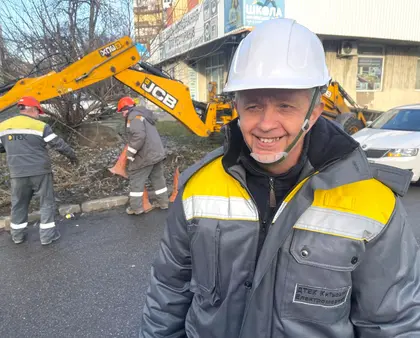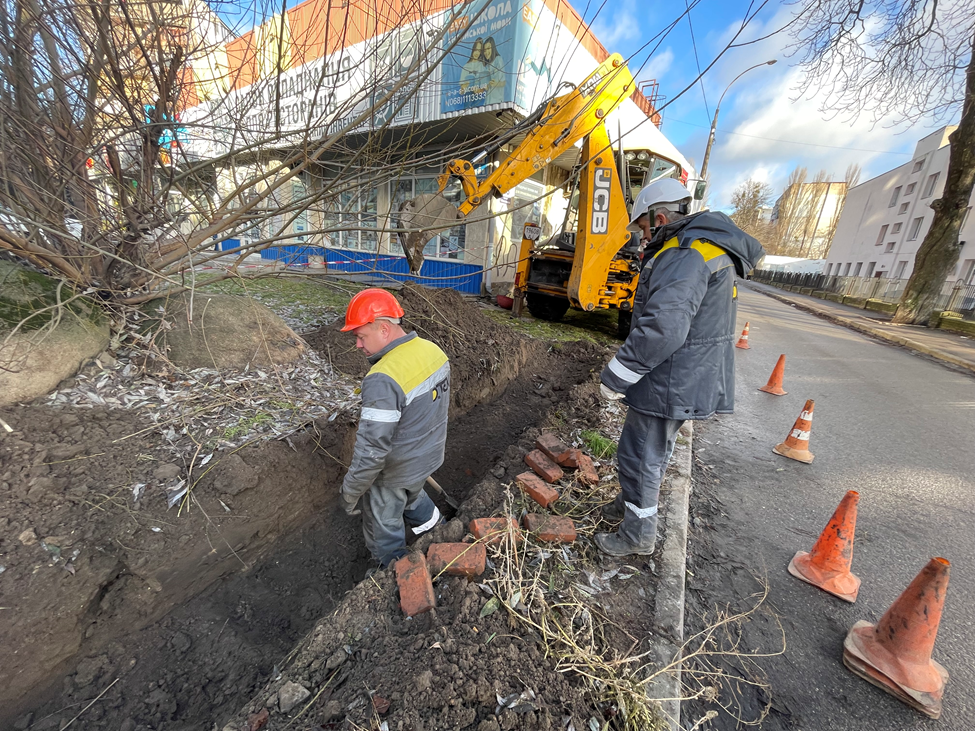Vyacheslav Afanasenko works for the private energy company DTEK. In an exclusive interview with Kyiv Post, he describes his team’s work and talks about the terrifying first few days of Russia’s full-scale invasion.
Before Russia’s full-scale invasion of Ukraine, the sight ofAfanasenko and his team of electricians digging up pavements in Kyiv to fix the capital’s power supply often prompted a stream of abuse from angry residents.
JOIN US ON TELEGRAM
Follow our coverage of the war on the @Kyivpost_official.
“People used to come out and scold us,” he tells Kyiv Post. “’You're digging here again?! Why can't you go faster?’, they would shout.”
Today, the reaction is very different and Kyiv’s grateful citizens recognize the crucial and sometimes life-threatening work Afanasenko and his team do, fixing the damage from Russian missile attacks, often while those very attacks are still ongoing.
“Yesterday, a woman brought us tea and biscuits, Afanasenko recalls. “She said: ‘I was watching you are working from the window. The weather is so cold outside, but you spend hours in the yard [working with] heavy cables. I decided to bring you some hot tea.’
“I asked her if she was sure and that usually people aren’t very happy when we dig up their yards, and she replied: ‘Yes, I’m sure and thank you for your work.’”

G7 Deal on $50 Billion Ukraine Loan Seen in October, Gentiloni Says
A day like no other
Afanasenko was at home in the early hours of the morning on Feb. 24, near the town of Irpin. Just a a few days later it would be under Russian occupation.
“I stood on my balcony and saw explosions everywhere, it was scary,” he says. “My boss called and said that I had to come to work because a lot depended on us.”
Despite the advancing invading army, Afanasenko had to leave his family for the day so he could get to work. A nervous day ensued, and as soon as he was finished, he raced home to make sure his children were as safe as could be.
“I was going home while explosions were rumbling around my house,” he says. “The Russian offensive was clearly on.
“We have a bomb shelter at work and I took the kids there. We were very tense. There was little information, and nothing was known for certain.”
Despite the danger, Afanasenko says everyone still showed up for work and many of those that lived near critical power facilities moved into bomb shelters nearby.
“They slept in bomb shelters with their families because their expertise could be [called upon] anytime,” he says.
Heading to the bomb shelter is not an option
After the first terrifying few weeks of the invasion, Kyiv was given a reprieve after the Russian army was forced to give up its botched attempt to capture the capital in the face of incredible resistance by the Ukrainian armed forces.
While fighting continued to rage in other parts of the country, Kyiv enjoyed what, in hindsight, was a relatively quiet summer with only a handful of rocket attacks.
This all changed on Oct. 10 when Russia began its ongoing and systematic bombing campaign of Ukraine’s energy infrastructure – the same energy infrastructure Afanasenko is charged with keeping running.
Air raid sirens that largely went ignored over the summer now mean a wave of up to 120 missiles or kamikaze drones are heading for cities across Ukraine, with the largest number usually reserved for Kyiv.
During an air raid, most people have the option of heading to a bomb shelter or at least staying at home making sure there are at least the recommended two walls between them and a potential impact site.
For Afanasenko and his team, this is not an option. “We have a particular protocol during an air raid alert,” he says. “Usually, we have to stay 500 meters away from substations, which are potential targets of Russian attacks.”
While this may keep them out of the immediate blast radius of a cruise missile, clearly it is still incredibly dangerous work,and Afanasenko has had some close calls.
He recalls fixing power lines near one of Kyiv’s main thermal power stations when he received an urgent call command from his superiors telling them a missile was heading their way and that they needed to leave the area immediately. They did, just in time to see it fly past them on the way out.
“It flew over so low and, at first, we thought it was an airplane,” he says.
Life-threatening work
Afanasenko is a family man with five children – three boys and two girls, the youngest 12 years old. All have to say goodbye to their father in the morning, not knowing what events the day may hold.
Since February, three DTEK employees have been killed and 24 injured.
“Of course, they are worried. They pray for me,” he says.
The combination of an incredibly high workload, being out in the open during regular Russian attacks, and five constantly worried children, creates a level of stress that no one outside of a war zone can fully comprehend, yet Afanasenko says he and his team are “used to it.”
More than that, they know their work is absolutely vital.
“There are so many people in Kyiv who depend on our work,” he says. “It’s already incredibly stressful for them with all the shelling, but if there is also a power outage for a long time, it would be even worse. So we have to work.
“When citizens see us working and controlling the energy situation in the city - it gives them hope.
“City life is based on electricity.”
You can also highlight the text and press Ctrl + Enter







